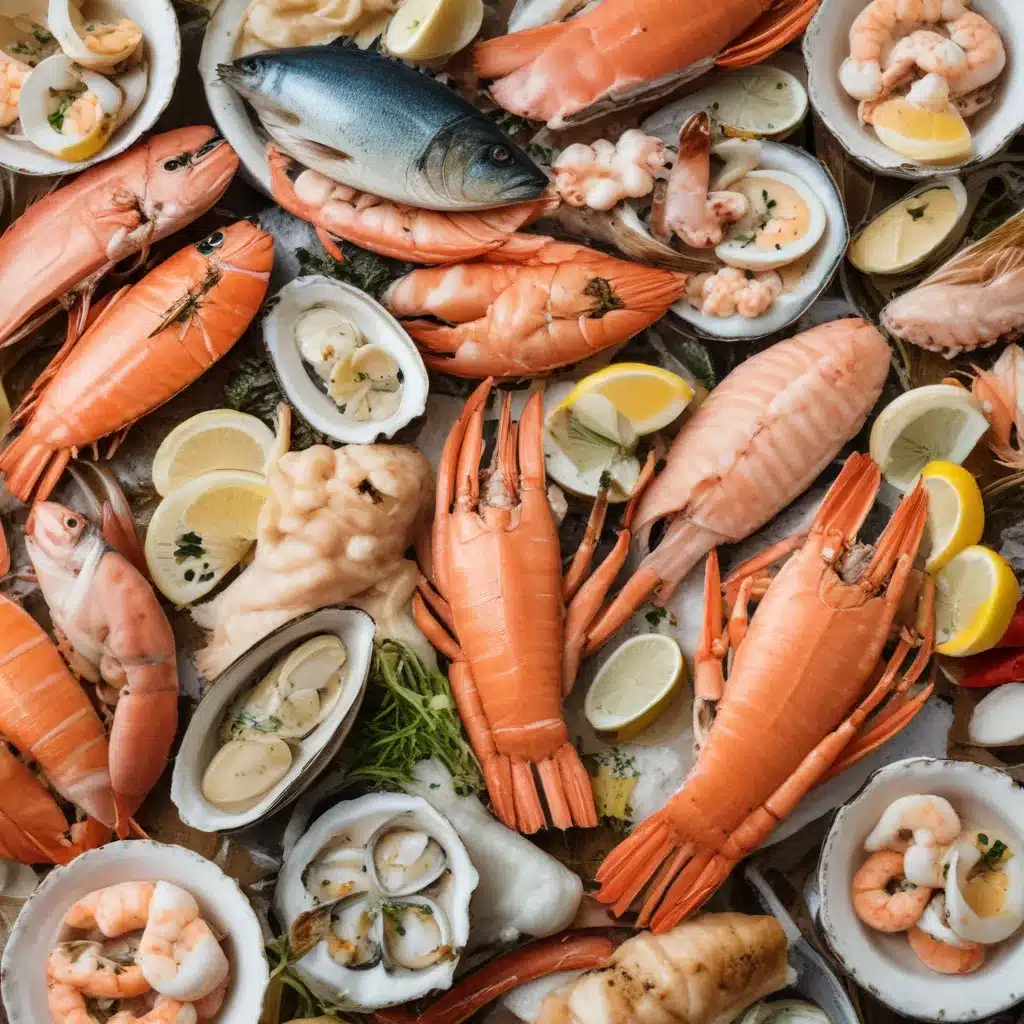
The world of seafood is vast and dynamic, with a myriad of fish and shellfish varieties, each with unique flavor profiles, nutritional properties, and preparation methods. As a seafood dining expert for Fish Tales Cafe, it is my responsibility to guide our readers through the evolving landscape of seafood safety, empowering them to make informed choices and enjoy the bounty of the oceans with confidence.
Seafood Contaminant Profiles
Seafood can be a remarkable source of lean protein, healthy fats, and essential vitamins and minerals. However, the modern seafood supply chain also introduces potential contaminants that must be carefully managed. Mercury, for example, is a naturally occurring heavy metal that can accumulate in certain predatory fish species, such as tuna, swordfish, and king mackerel. Prolonged exposure to elevated mercury levels can pose health risks, particularly for vulnerable populations like pregnant women and young children.
In addition to heavy metals, seafood may also be susceptible to microbiological contaminants, such as pathogenic bacteria, viruses, and parasites. Improper handling, storage, or preparation can allow these hazards to thrive, potentially causing foodborne illnesses like salmonellosis, vibriosis, or listeriosis. Strict adherence to food safety protocols throughout the supply chain is crucial to mitigate these risks.
Regulatory Frameworks for Seafood
Fortunately, comprehensive regulatory frameworks have been established to safeguard the seafood we consume. In the United States, the Food and Drug Administration (FDA) oversees the safety and quality of seafood products, setting guidelines for acceptable levels of contaminants and enforcing strict standards for processing, labeling, and distribution. The Environmental Protection Agency (EPA) also plays a key role, issuing fish consumption advisories and working to address environmental sources of seafood contamination.
These regulatory agencies collaborate with international organizations, such as the Codex Alimentarius Commission, to harmonize seafood safety standards globally. This international cooperation helps ensure a consistent, science-based approach to seafood safety, fostering consumer confidence and facilitating global trade.
Emerging Seafood Safety Concerns
As the seafood industry continues to evolve, new challenges and concerns are emerging. The rise of aquaculture, or fish farming, has introduced novel considerations, such as the responsible use of antibiotics and the potential for the concentration of environmental pollutants in farmed species. Additionally, climate change-driven factors, such as ocean acidification and harmful algal blooms, can alter the prevalence and distribution of seafood-borne hazards, requiring vigilance and adaptability from regulators and industry stakeholders.
Traceability and Transparency
Ensuring seafood safety in the modern era also hinges on the ability to trace the origins and journey of seafood products throughout the supply chain. Robust traceability systems, facilitated by technological advancements like blockchain, empower consumers to make informed choices and hold the industry accountable for responsible practices.
Fish Tales Cafe is committed to sourcing seafood from reputable suppliers who prioritize transparency and sustainability. By working with suppliers who can provide detailed information about catch locations, processing methods, and sustainability certifications, we can confidently offer our diners the peace of mind that comes with knowing the provenance of their seafood.
Cold Chain Management
Proper cold chain management is another critical aspect of seafood safety. Maintaining the appropriate temperatures during transportation, storage, and handling is essential to inhibit the growth of pathogenic microorganisms and preserve the freshness and quality of seafood products. Our culinary team at Fish Tales Cafe closely monitors the temperature of incoming seafood deliveries and ensures that proper refrigeration and handling protocols are followed in our kitchen.
Seafood Consumption Patterns and Risk Perception
Seafood safety is not only a matter of industry practices and regulatory oversight but also a function of consumer behavior and risk perception. Understanding the seafood consumption patterns and risk perceptions of our diners is crucial for effectively communicating safety information and promoting responsible seafood choices.
Some consumers may be deterred from seafood consumption due to concerns about contaminants or foodborne illness, while others may not fully appreciate the health benefits of regularly incorporating seafood into their diets. At Fish Tales Cafe, we strive to educate our patrons on the nutritional advantages of seafood, the robust safety measures in place, and the importance of balanced seafood consumption as part of a healthy, well-rounded diet.
Technological Advancements in Seafood Safety
Cutting-edge technologies are revolutionizing the way we approach seafood safety. Rapid detection methods, such as polymerase chain reaction (PCR) and enzyme-linked immunosorbent assay (ELISA) tests, allow for the quick and accurate identification of microbial contaminants, enabling proactive intervention and recalls when necessary.
Furthermore, the integration of blockchain technology into seafood traceability systems is transforming the industry, providing an immutable, transparent record of a product’s journey from catch to plate. This enhanced traceability empowers consumers to make informed choices and incentivizes industry players to prioritize responsible practices.
Navigating the Future of Seafood Safety
As we navigate the dynamic and ever-evolving landscape of seafood safety, it is clear that a multifaceted approach is required. Collaboration between industry, regulators, and consumers is essential to address emerging challenges, foster transparency, and ensure the continued safety and enjoyment of the seafood we love.
At Fish Tales Cafe, we are committed to being at the forefront of seafood safety, leveraging the latest advancements in technology, adhering to rigorous standards, and educating our patrons to empower them to make informed choices. By working together, we can navigate the modern era of seafood with confidence and continue to savor the delicious and nutritious bounty of the oceans.
For the latest updates on seafood safety, industry trends, and culinary inspirations, be sure to visit our website at www.fishtalescafe.com.

